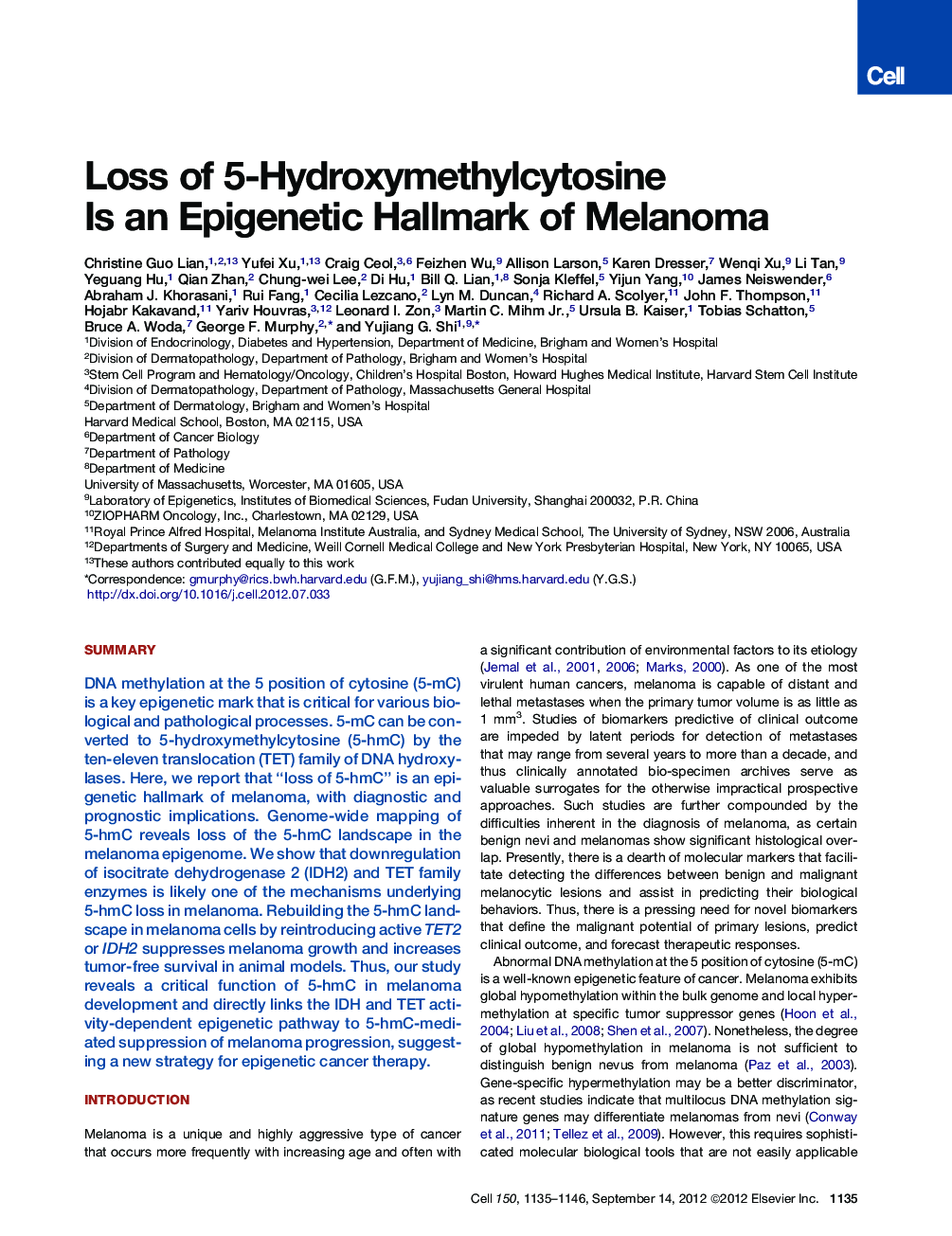| کد مقاله | کد نشریه | سال انتشار | مقاله انگلیسی | نسخه تمام متن |
|---|---|---|---|---|
| 2035943 | 1543097 | 2012 | 12 صفحه PDF | دانلود رایگان |

SummaryDNA methylation at the 5 position of cytosine (5-mC) is a key epigenetic mark that is critical for various biological and pathological processes. 5-mC can be converted to 5-hydroxymethylcytosine (5-hmC) by the ten-eleven translocation (TET) family of DNA hydroxylases. Here, we report that “loss of 5-hmC” is an epigenetic hallmark of melanoma, with diagnostic and prognostic implications. Genome-wide mapping of 5-hmC reveals loss of the 5-hmC landscape in the melanoma epigenome. We show that downregulation of isocitrate dehydrogenase 2 (IDH2) and TET family enzymes is likely one of the mechanisms underlying 5-hmC loss in melanoma. Rebuilding the 5-hmC landscape in melanoma cells by reintroducing active TET2 or IDH2 suppresses melanoma growth and increases tumor-free survival in animal models. Thus, our study reveals a critical function of 5-hmC in melanoma development and directly links the IDH and TET activity-dependent epigenetic pathway to 5-hmC-mediated suppression of melanoma progression, suggesting a new strategy for epigenetic cancer therapy.
Graphical AbstractFigure optionsDownload high-quality image (362 K)Download as PowerPoint slideHighlights
► Loss of 5-hmC is an epigenetic hallmark of melanoma, with diagnostic/prognostic value
► Genome-wide mapping reveals a demolished 5-hmC landscape in human melanoma epigenome
► Downregulating IDH2 and TETs suggests a mechanism underlying 5-hmC loss in melanoma
► TET2 and IDH2 set the 5-hmC landscape, suppress melanoma growth, and increase survival
Journal: - Volume 150, Issue 6, 14 September 2012, Pages 1135–1146